Creating a beautiful flower garden is more than just a hobby; it’s an art form that brings vibrant life and color to any space, and it offers a sanctuary for both the soul and mind. Whether you’re a novice just dipping your toes into the world of gardening or a seasoned horticulturist looking to refine your craft, nurturing a garden is a journey filled with discovery and joy. With every seed you plant, you embark on a path that connects you to nature in its purest form, offering beauty and tranquility to your surroundings.
In this guide, we will explore the essentials of growing a stunning flower garden, equipping you with practical tips and insights to help your garden thrive in any environment. From selecting the right flowers for your climate to understanding the nuances of soil preparation and maintenance, we will delve into the key elements that transform a patch of earth into a blooming masterpiece. By the end, you’ll have the confidence and knowledge to cultivate a garden that not only reflects your personal style but also enriches your outdoor space with a kaleidoscope of colors and scents. So, roll up your sleeves and prepare to dig into a world of gardening possibilities!
Select Suitable Flower Varieties
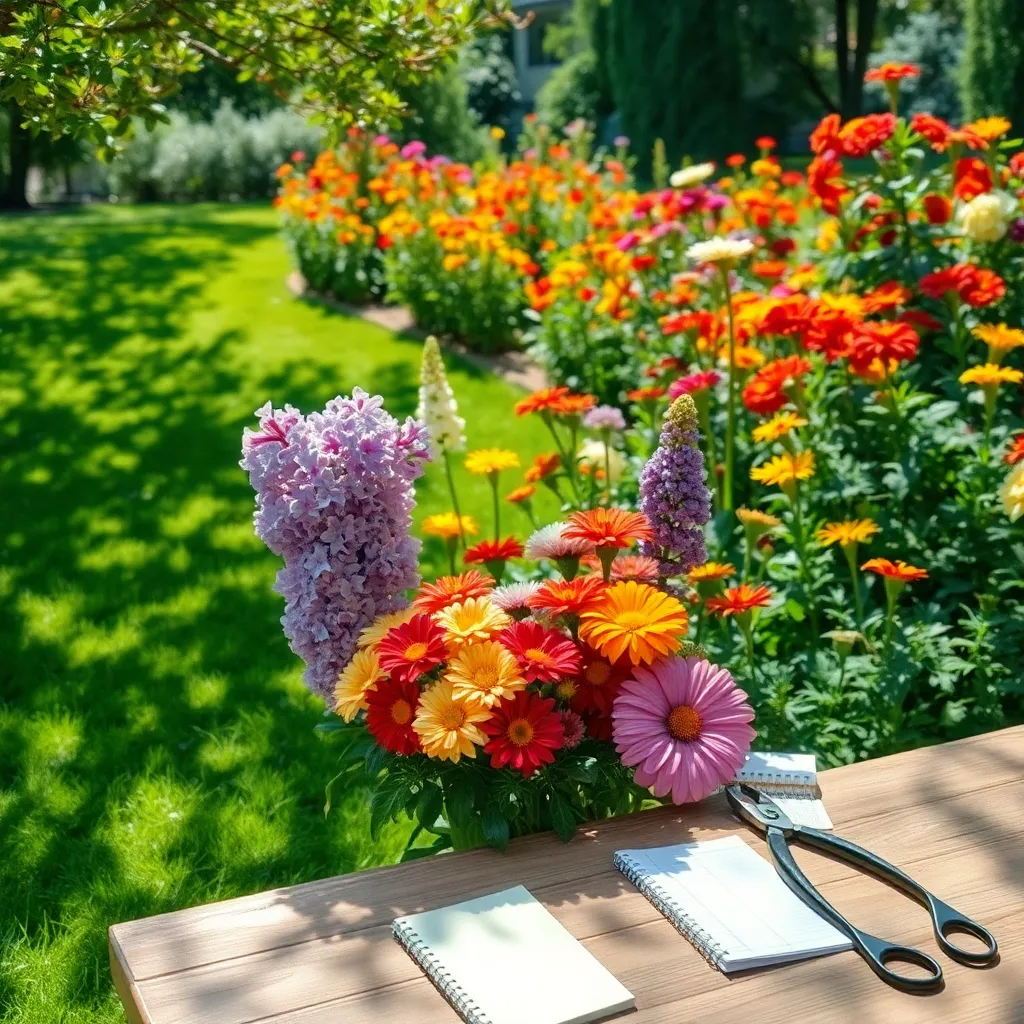
When selecting flower varieties, consider your local climate and the specific growing conditions in your garden. Some flowers, like zinnias and marigolds, thrive in sunny spots, while others, such as hostas and impatiens, prefer shaded areas.
It’s crucial to choose flowers that match your soil type to ensure healthy growth. For instance, lavender and yarrow flourish in well-draining, sandy soil, whereas daylilies and bee balm perform well in richer, loamy soil.
Watering needs vary among flower types, so understanding these requirements is key to maintaining a lush garden. Generally, drought-tolerant flowers like sedums require less frequent watering, while moisture-loving plants such as astilbes need consistently damp soil.
For those ready to try something advanced, consider experimenting with companion planting to enhance growth and deter pests. Pairing marigolds with roses can naturally repel aphids, while planting nasturtiums near cucumbers can help control cucumber beetles.
Prepare and Enrich the Soil
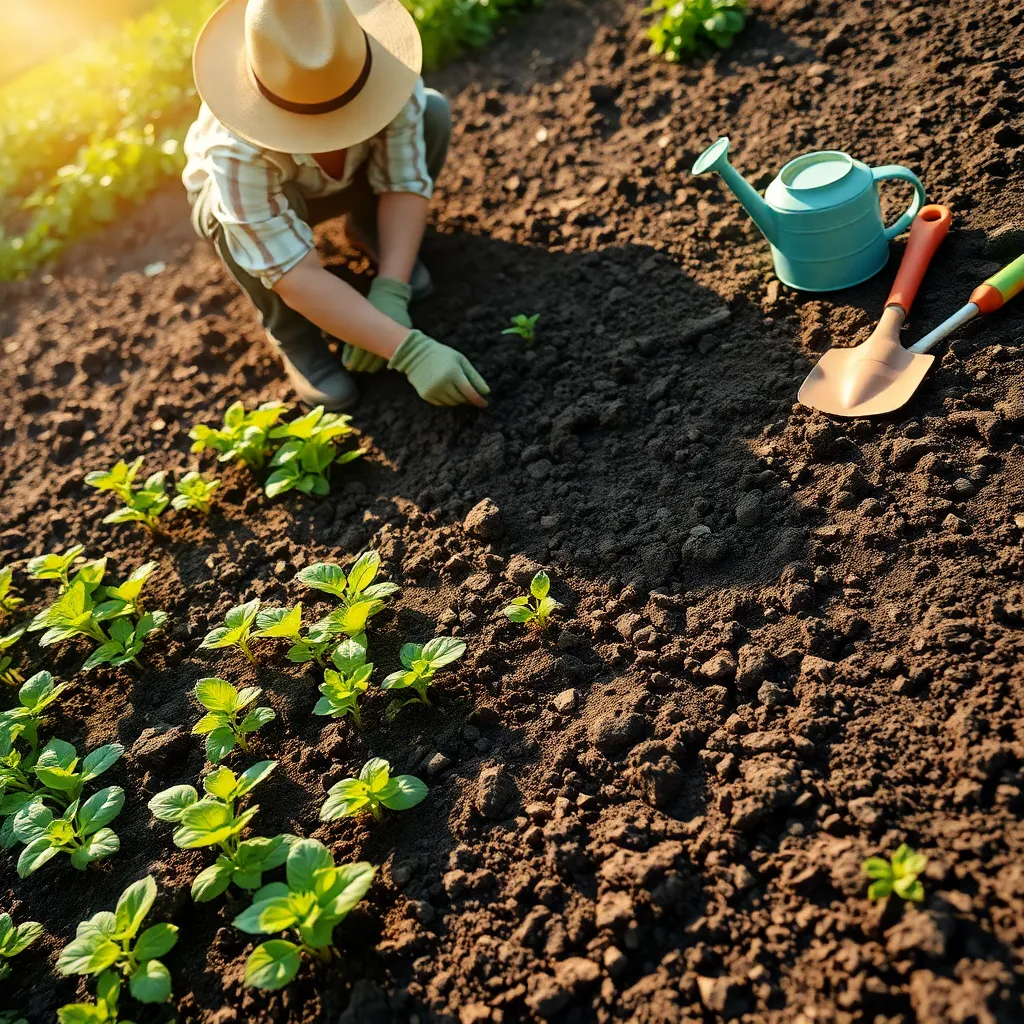
To grow a beautiful flower garden, it’s crucial to first prepare and enrich the soil. Start by clearing the area of any weeds, rocks, or debris, ensuring a clean slate for your plants.
Test your soil to understand its pH level and nutrient content, which will guide you in making necessary amendments. Most flowers thrive in slightly acidic to neutral soil, so aim for a pH between 6.0 and 7.0.
Improving soil structure is essential for healthy root development. Incorporate organic matter like compost or well-rotted manure, which enhances drainage and provides vital nutrients.
For sandy soils, add organic mulches to improve water retention and nutrient holding capacity. In contrast, if you have clay soil, mix in coarse sand or gypsum to break up the dense texture and improve aeration.
- Regularly turn the soil with a spade or fork to aerate it and prevent compaction.
- Consider using a soil conditioner like peat moss for better moisture retention and to lighten the soil.
- For advanced gardeners, try using cover crops during the off-season to naturally enrich the soil with nitrogen.
Plan and Design the Layout
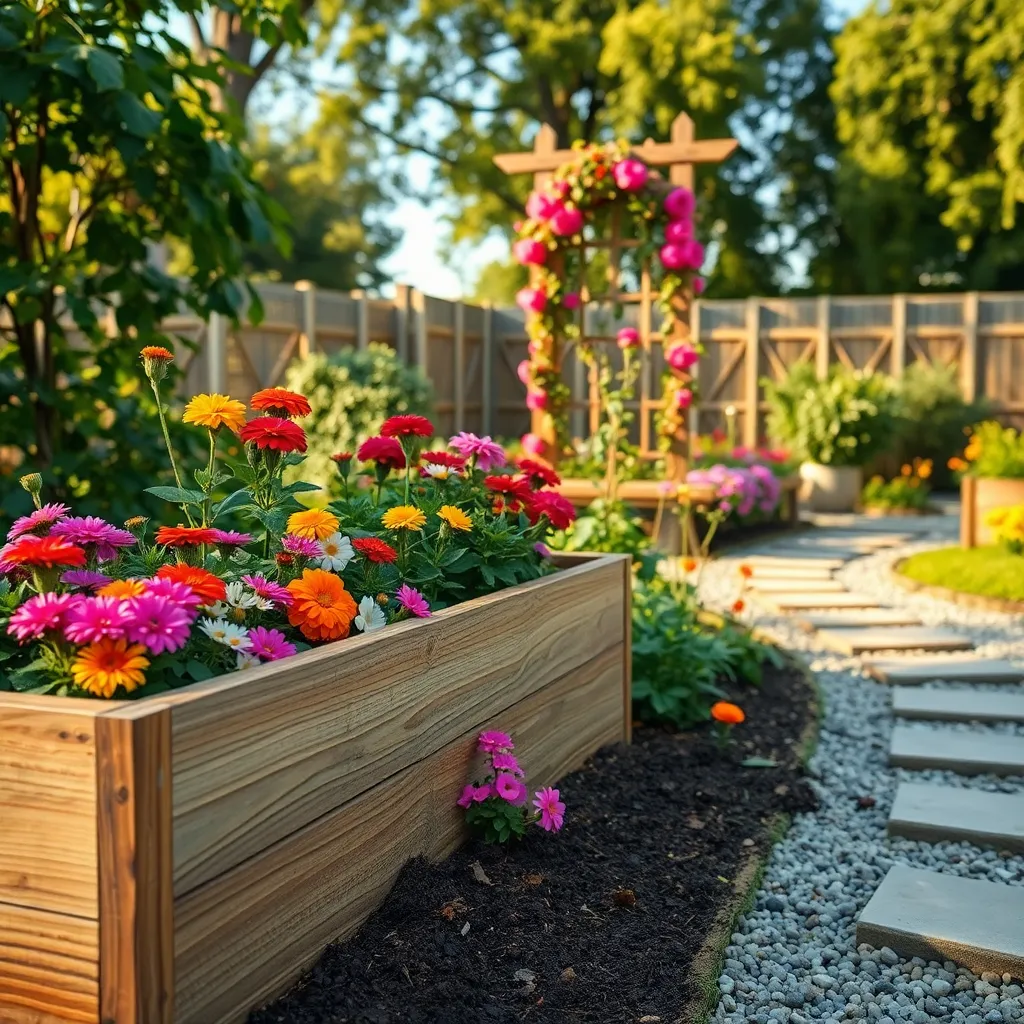
Designing the layout of your flower garden is a crucial step that influences both aesthetics and plant health. To begin, sketch a rough plan on paper, taking into account the size and shape of your garden area.
Consider the sunlight exposure each part of your garden receives throughout the day. Match plant placement with their sunlight needs: place sun-loving varieties like zinnias and marigolds in the brightest spots, while shade-tolerant plants like hostas thrive in less sunny areas.
Incorporating a mix of plant heights adds visual interest and improves air circulation. Position taller plants like delphiniums and sunflowers at the back or center of the garden bed, with shorter ones like pansies and alyssums at the edges.
For continuity and balance, use repetition and symmetry in your design. Group plants of the same species together or repeat patterns across the garden to create a cohesive look, which also simplifies maintenance.
Plant Flowers at Optimal Spacing
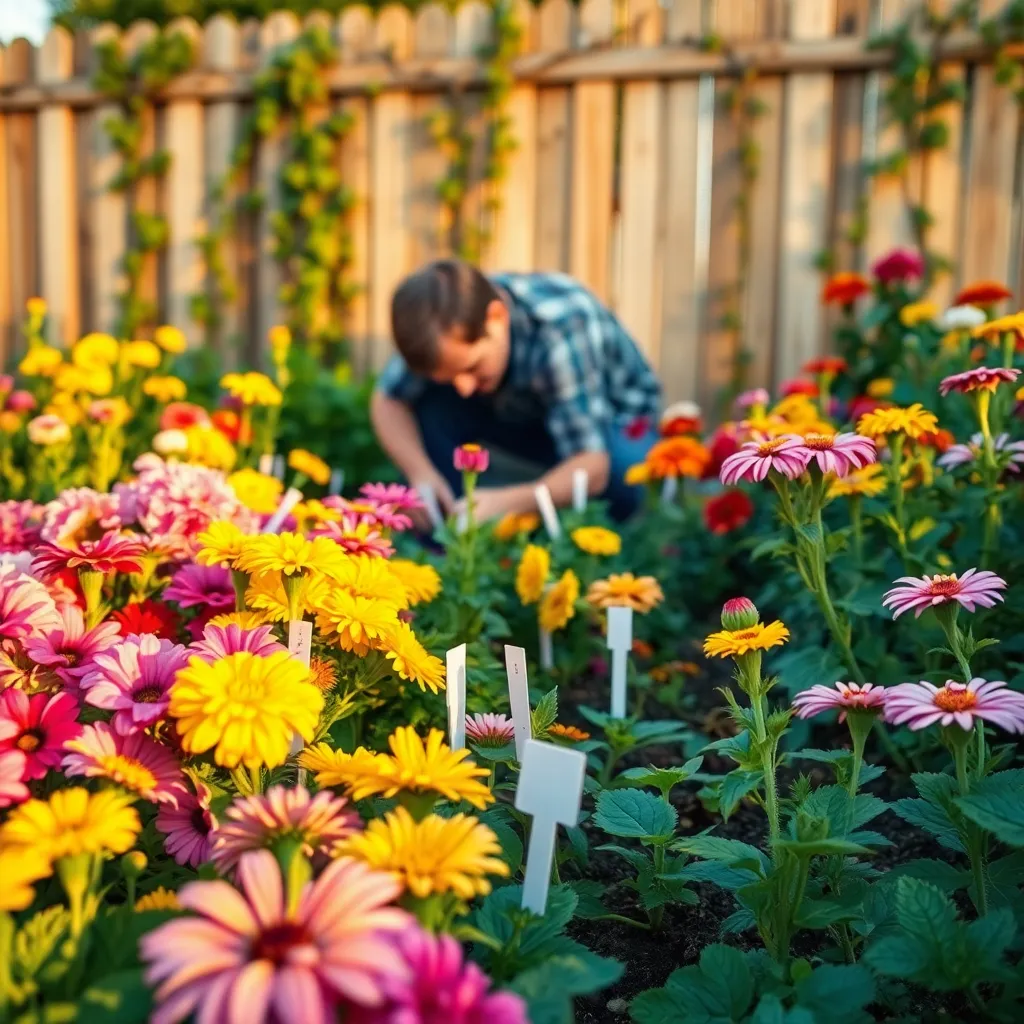
When planting flowers, ensuring optimal spacing is crucial for their health and aesthetic appeal. Proper spacing allows each plant to access sufficient sunlight, water, and nutrients, which promotes robust growth.
Begin by researching the mature size of the flowers you plan to plant. This information is typically found on seed packets or plant tags, which will guide you on how much space to leave between each plant.
For beginners, consider using a measuring tape to achieve accurate spacing between plants. This simple tool can help you avoid overcrowding, which can lead to diseases and reduced flowering.
More experienced gardeners might use a grid system to plan their garden. A grid can help visualize the layout, ensuring each flower has the right amount of space to thrive, especially when dealing with varied plant sizes.
For optimal results, consider the specific needs of your chosen plant species. Some flowers, like sunflowers, require more space due to their large blooms and need plenty of sunlight, whereas others, like pansies, can be planted closer together and tolerate partial shade.
Advanced tip: Incorporate companion planting to maximize space and deter pests naturally. For instance, planting marigolds alongside tomatoes can help protect your garden from certain insects while enhancing the visual appeal.
Remember, the key to a beautiful flower garden lies in thoughtful planning and execution. By paying attention to spacing, you give your flowers the best chance to flourish and create a stunning display.
Water and Mulch Consistently
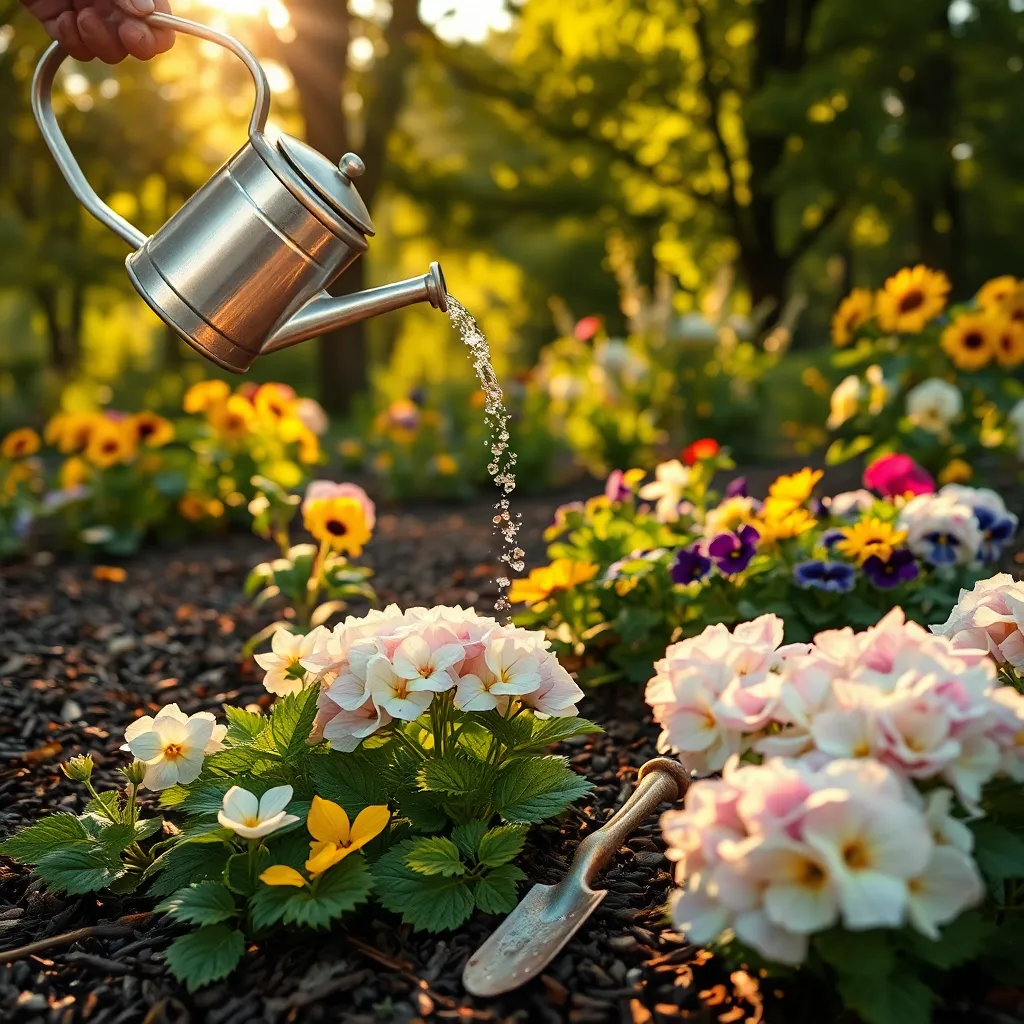
Consistent watering is essential for maintaining a healthy flower garden, as it helps plants develop strong root systems. Aim to water your garden in the early morning or late afternoon to minimize evaporation and allow the soil to absorb moisture effectively.
For most flowers, a deep watering once or twice a week is more effective than shallow, frequent watering. This encourages roots to grow deeper into the soil, enhancing their ability to access nutrients and withstand dry spells.
Consider using a soaker hose or drip irrigation system to provide a slow, steady supply of water right to the plants’ roots. These methods are not only efficient but also help prevent water from splashing onto leaves, which can cause fungal diseases.
Mulching your flower beds is another key practice that complements consistent watering. A layer of organic mulch, such as shredded bark or straw, helps retain soil moisture, suppress weeds, and regulate soil temperature.
Apply a 2-3 inch layer of mulch around your plants, ensuring not to pile it directly against the stems to avoid rot. Over time, organic mulch breaks down, enriching the soil with nutrients and improving its structure.
Experiment with different types of mulch to see which works best for your specific garden conditions. For example, pine needles are excellent for acid-loving plants, while compost can provide a nutrient boost for all flowers.
Conclusion: Growing Success with These Plants
In nurturing a beautiful flower garden, we unearth profound lessons about cultivating thriving relationships. First, the importance of understanding unique needs is akin to knowing the specific soil and sunlight each plant requires. Second, communication, like regular watering, sustains growth. Third, patience is key, as flourishing connections, much like flowers, take time to blossom. Fourth, adaptability is essential; just as gardens face changing seasons, relationships encounter evolving circumstances. Lastly, consistent care is vital—tending to weeds ensures the garden, and our bonds, remain healthy.
To take immediate action, consider initiating an open dialogue with your partner or loved ones, focusing on understanding and addressing each other’s unique needs. This simple step can lay the groundwork for deeper connection and growth.
Remember, strong relationships are the foundation of a fulfilling life. Save or bookmark this article now to keep these insights at your fingertips, ready to guide you through your relationship journey. As you apply these principles, envision a future where your relationships are as vibrant and resilient as a well-tended garden, blossoming with love and mutual respect. Together, let’s cultivate connections that endure and flourish.
